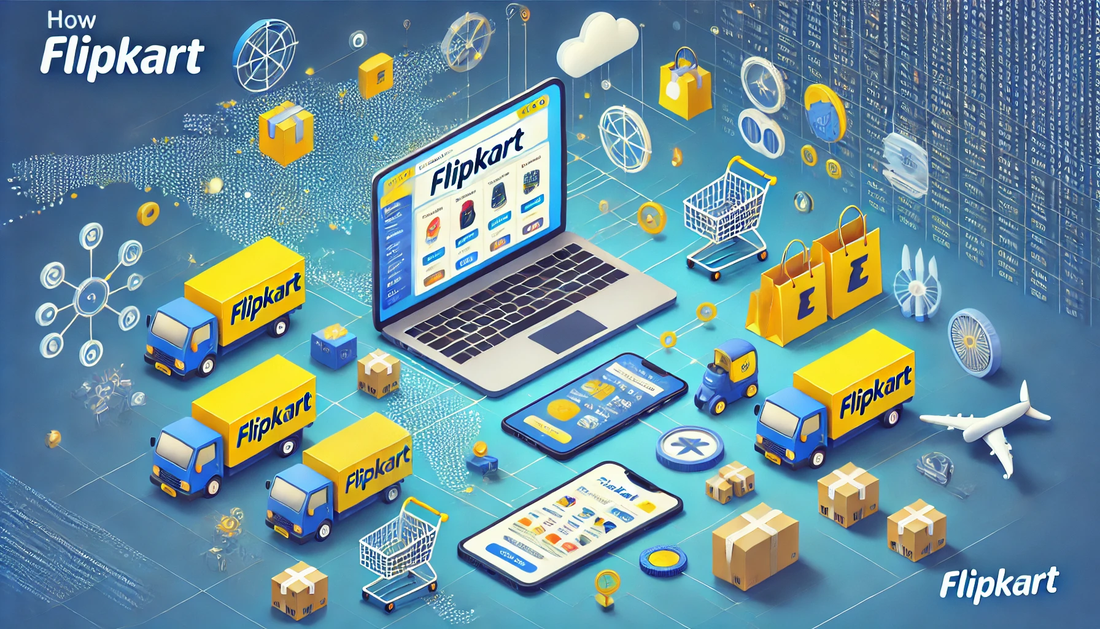In the bustling world of e-commerce, Flipkart stands as a beacon of success in India. Founded in 2007 by Sachin and Binny Bansal, Flipkart has grown from a modest online bookstore to a multi-billion-dollar e-commerce giant.
For startup founders, Flipkart's journey offers invaluable lessons on building a successful business in a competitive market.
Understanding the Market
Flipkart's founders understood the Indian market's unique challenges and opportunities. They recognized the potential of e-commerce in a country with a burgeoning middle class and increasing internet penetration.
For startups, understanding your target market is crucial. Conduct thorough research to identify gaps and opportunities.
Customer-Centric Approach
Flipkart's success is largely attributed to its customer-centric approach. They focused on providing a seamless shopping experience, from user-friendly interfaces to reliable delivery services.
Startups should prioritize customer satisfaction by listening to feedback and continuously improving their offerings.
Building a Strong Brand
Flipkart invested heavily in building a strong brand identity. They used creative marketing strategies and memorable campaigns to establish themselves as a household name. For startups, building a brand is more than just a logo; it's about creating a lasting impression.
Leveraging Technology
Technology played a pivotal role in Flipkart's growth. They invested in robust infrastructure and innovative solutions to enhance their platform's performance. Startups should leverage technology to streamline operations, improve efficiency, and offer unique solutions to their customers.
Strategic Partnerships
Flipkart formed strategic partnerships to expand its reach and capabilities. Collaborations with logistics companies and payment gateways helped them overcome operational challenges. Startups can benefit from partnerships by accessing new markets, resources, and expertise.
Adapting to Change
Flipkart's ability to adapt to changing market dynamics was crucial to its success. They embraced new trends and technologies, such as mobile commerce and AI-driven recommendations.
Startups should remain agile and open to change, continuously evolving to meet market demands.
Focus on Innovation
Innovation was at the heart of Flipkart's strategy. They introduced features like cash-on-delivery and easy returns, which were game-changers in the Indian market. Startups should foster a culture of innovation, encouraging creative solutions to address customer needs.
Scaling Operations
As Flipkart grew, they scaled their operations to meet increasing demand. They invested in logistics, warehousing, and technology to support their expansion. Startups should plan for scalability from the outset, ensuring they can handle growth without compromising quality.
Building a Strong Team
Flipkart's success was driven by a talented and dedicated team. They focused on hiring the right people and fostering a collaborative work environment. Startups should prioritize building a strong team, investing in talent development and creating a positive company culture.
Securing Funding
Flipkart's growth was fueled by strategic funding rounds. They attracted investments from major players, which helped them scale and innovate. Startups should focus on building a compelling business case to attract investors and secure the necessary funding for growth.
Learning from Failures
Flipkart faced its share of challenges and failures. However, they used these experiences as learning opportunities to improve and adapt. Startups should embrace failure as a part of the journey, using setbacks as stepping stones to success.
Conclusion
Flipkart's journey from a small startup to an e-commerce giant is a testament to the power of vision, innovation, and perseverance. For startup founders, the lessons from Flipkart's success are clear: understand your market, prioritize customers, embrace technology, and never stop innovating.
By adopting these strategies, startups can navigate the challenges of building a successful business and create their own success stories in the competitive world of e-commerce.










